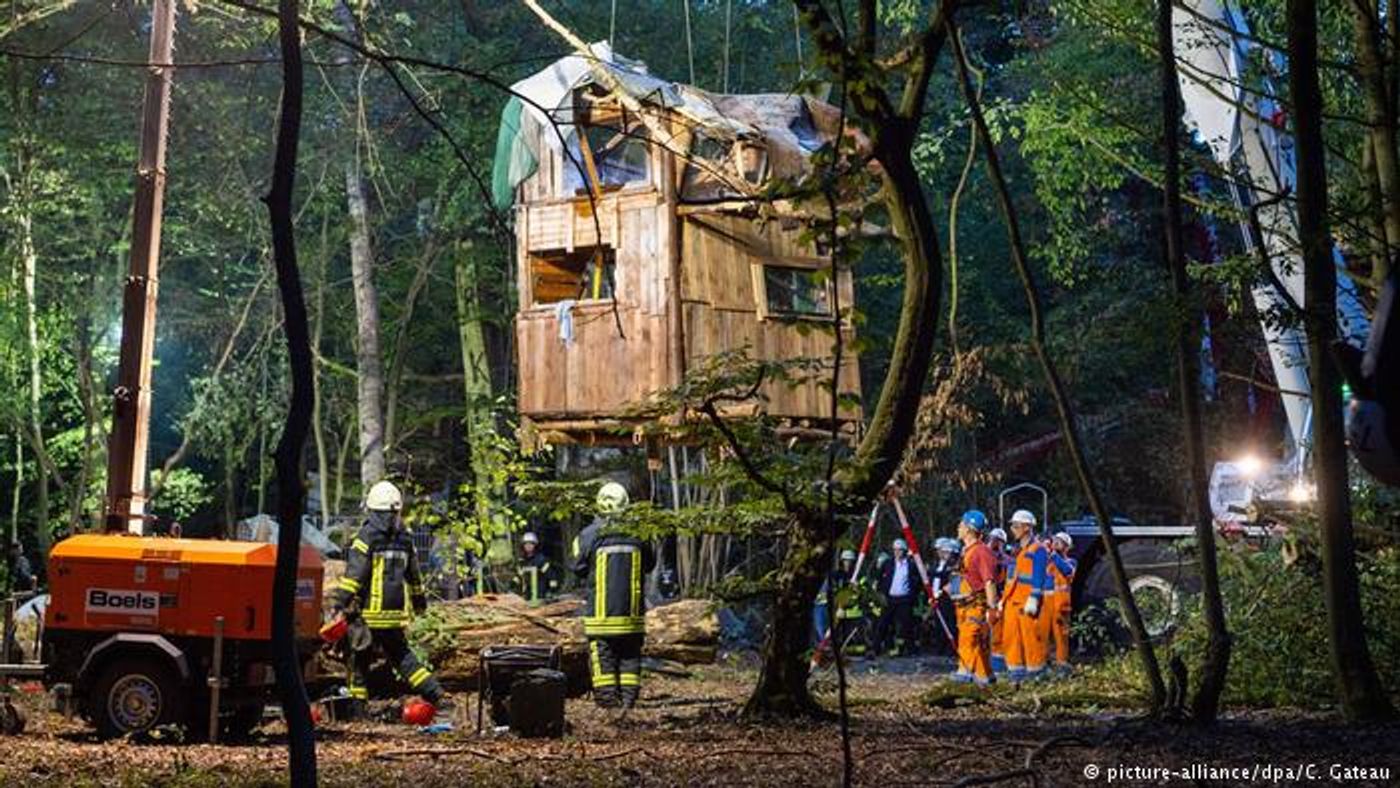Can the Hambach forest be saved?
The Hambach Forest is nestled in the Rhineland of western Germany, not too far from the city of Cologne. At 12,000 years old, it is the oldest old-growth forest in Central Europe and it used to cover an area of 5,500 hectares. Now only 1,100 hectares remain, due to deforestation by a German energy company called RWE. RWE (previously called Rheinbraun) bought the forest from the nearby parishes in 1978 with the intentions of mining lignite coal and has since obliterated the forest stands down to less than a tenth of its original area.
The people of Germany have not taken this sitting down. For the past five years, people have been occupying the forest, living in treehouses, conducting weekly marches and demonstrations, and protecting the trees with their own lives. But earlier this month the efforts to protect the forest grew, as RWE announced that it would begin clear-cutting in mid-October.
In a record-breaking crowd, 50,000 people from across Europe gathered together in an anti-coal demonstration. The activists, made up of local farmers, environmental activists, church groups, local residents, and foreign allies, held signs and banners boldly stating "Farmers against coal" and "We will end coal."
"This rally is about demanding that the German government break the deadlock of a climate policy that has failed to reduce carbon emissions for nearly a decade now, but it also is about showing governments everywhere that a growing climate movement is demanding an end to dirty and outdated fossil fuels," said Martin Kaiser, executive director of Greenpeace Germany, one of the organizations leading the rally. "The German coal phase-out needs to start here and now and the last coal plant needs to shut down by 2030 if we are to meet the goals of the Paris Agreement."
The existing mine, Hambacher Tagebau, is situated where old sections of the forest have already been felled. The mine is part of the Rhenish lignite mining area, which is the biggest in Europe. Though Germany has been a leader for environmental activism and policies in some forms, it still holds the title for the most of coal-fired plants in Europe. The Rhenish lignite mining area, in particular, is the biggest single emission source of CO₂ in Europe and generates more radioactive fine dust than all traffic in Germany.
Such pollution and destruction of habitats put the forest’s unique species at threat. Composed of Hornbeam and English oaks that are over 300 years old, the forest is home to several endangered species such as the Bechstein’s bat, the medium spotted woodpecker and the dormouse, in addition to tawny owls and many migratory bird species. Experts say that if the plans for the mine continue, the remaining forest will be eradicated within the next three years, likely leaving several species, like the dormouse, extinct.
Although felling of the forest is limited to between the months of October and March, in the past years RWE has been illegally clearing forest outside of this season. That’s not the only illegal action that RWE has committed. According to Common Dreams, a German court recently forbid RWE from carrying out a clear-cutting operation of the forest. Nevertheless, RWE has been evicting the activists participating in the forest occupation and felling trees since mid-September.
"The court ruling shows that blatant lies and reckless policies of corporations like RWE are no longer acceptable," said Kaiser. "However, it doesn’t switch off a single coal plant and doesn’t stop any of the other lignite mines. There still are villages, forests and churches in danger of being destroyed and people are no longer willing to accept that – at the Hambacher Forest or any other mines anywhere in the world."
The activists are placing the blame not only on RWE but also on the national government, saying that the government has a responsibility to protect the country’s natural resources. And now with the IPCC’s 2018 report in mind, environmentalists are rallying more than ever with a sense of urgency. But the CEO of RWE, Rolf Martin Schmitz was firm in his statement to the Kölner Stadt-Anzeiger newspaper: "There's no possibility of leaving the forest standing," he said, commenting that keeping the woodland untouched is "technically impossible. We need the ground beneath the remaining forest in order to keep the embankments stable."
Sources: Common Dreams, Hambach Forest, The Local, DW (1) (2)









